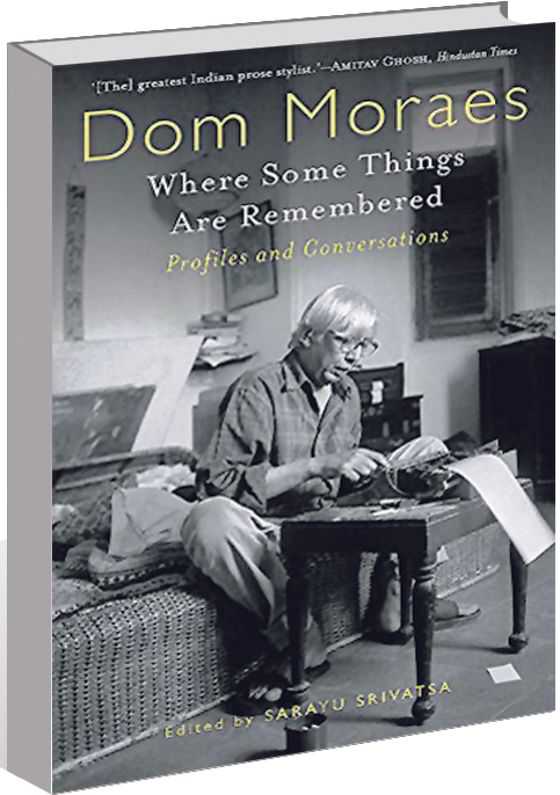Gaurav Kanthwal
Dominic Francis Moraes or Dom Moraes is considered as one of the finest Indian English poets. Some of the most famous prose writers say he is the greatest prose stylist India has ever produced. Moraes has a litany of literary awards to his credit which he started winning early in his career. His writings, lineage and his flamboyant persona make him one of the most popular Indian poets of all time. Yet, it is true that Moraes is the least read, least studied and least appreciated major Indian poet. To the extent that some of the universities do not have a single poem of Moraes in their syllabus for Indian writings in English.
He still remains, in his own words, ‘resident alien’ in his country of birth and death. Fourteen years after his death, some of his writings have been selected in two books: Where Some Things are Remembered and Under Something of a Cloud.
These books are primarily a collection of profiles, places and events in the form of travel writing. Some of the sketches in this volume have appeared in Moraes’ memoirs, non-fiction books, anthologies, magazines and newspaper articles published in his lifetime (1938-2004).
Moraes’ artistry lies in capturing the oddities of the people. When he portrays Indira Gandhi, he begins by describing her persona in chair of authority. When he chooses supercop KPS Gill as his object of attention, he kicks off with the most salacious incident of his career, followed by his incredible whiskey-guzzling powers and his famed SPG security cover. His counter-terrorism ‘heroics’ comes much later in the narrative. In Laloo Prasad’s profile, Moraes would rather have the measure of his private secretary first.
In Where Some Things are Remembered, Moraes’ uncanny habit of seeing people through the eyes of a poet and writing about them from the perspective of a journalist comes to the fore. Moraes is not afraid of even poking fun at Mother Teresa’s programme of family planning in opposition to contraception. Describing the introduction of the rhythm method in poor mothers whereby they were provided thermometers to keep a tab on their body temperatures, he suggestively notes that with this they were supposed to plot monthly charts of safe and unsafe periods for intercourse.
The poet’s meeting with the Dalai Lama has been wittily described. The religious leader and his mannerism doe not remain unscathed by Moraes’ sarcasm. Not even saints and godly personalities escape his scrutiny.
Known for his use of imagery, and sometimes criticised for its overuse, Moraes not only described what he saw, he adeptly constructed atmosphere around things, persons and places. In these two books, the reader will encounter several anecdotes where the author builds a mood or a situation with an imagery, depending upon the object of his interest, and then follows it with up with the main topic.
A marvellous prose stylist, one particular trait of Moraes’ that comes out in his books is that he endowed an illusionary, fictitious feel to people to build a preconceived mood and effect that describes the tension of the times. Under Something of a Cloud is exquisite travel writing in which the author’s trip to Sri Lanka, South East Asia and Australia have been featured in a prose that has a poetic flow and is replete with vivid descriptions.
Moraes’ relationship with his father Frank Moraes, mentally-disturbed mother Beryl and their fractured family has been dealt in detail without any inhibitions.
Sarayu Srivatsa, the editor, has not clearly explained the purpose of culling out a book from the literature that’s already been published. One can only surmise that Srivatsa wants to pay tribute to one of the India’s greatest poets, and her companion of 14 years.
Unlock Exclusive Insights with The Tribune Premium
Take your experience further with Premium access.
Thought-provoking Opinions, Expert Analysis, In-depth Insights and other Member Only Benefits
Already a Member? Sign In Now










